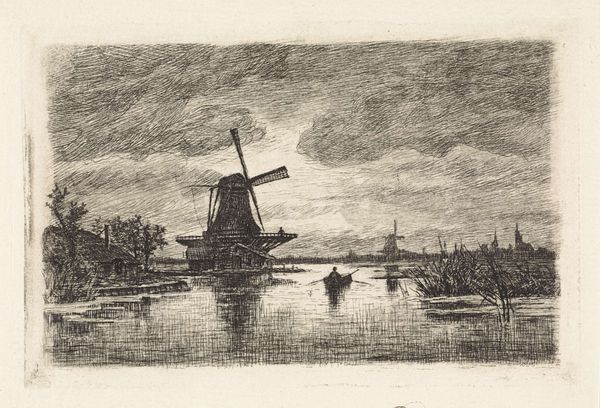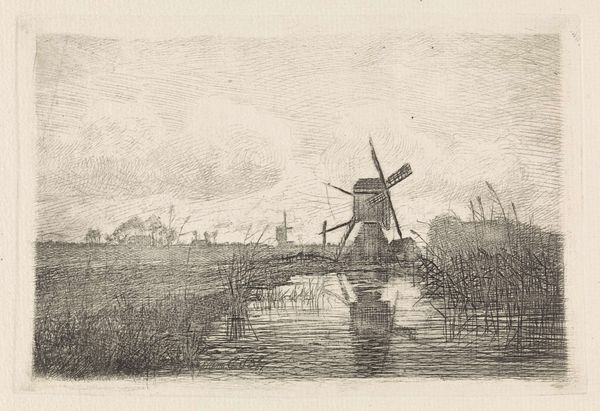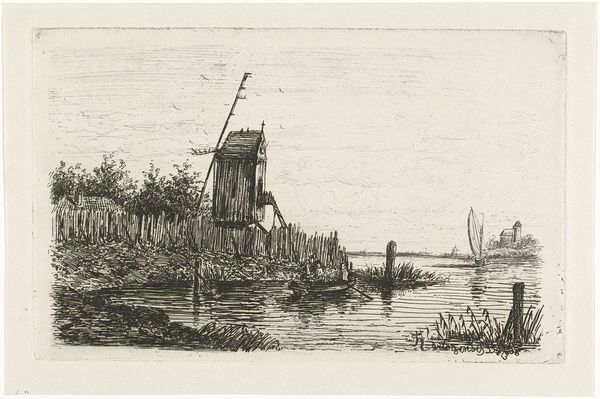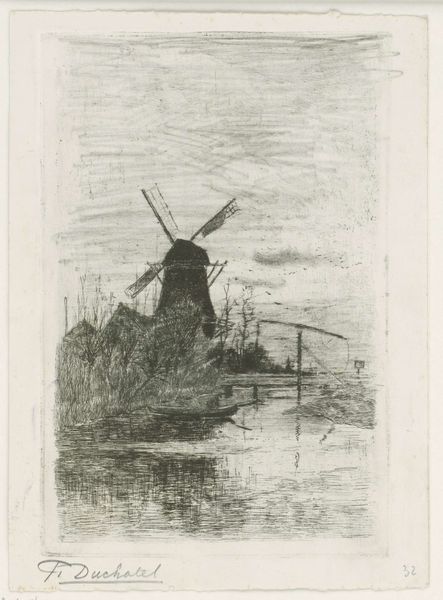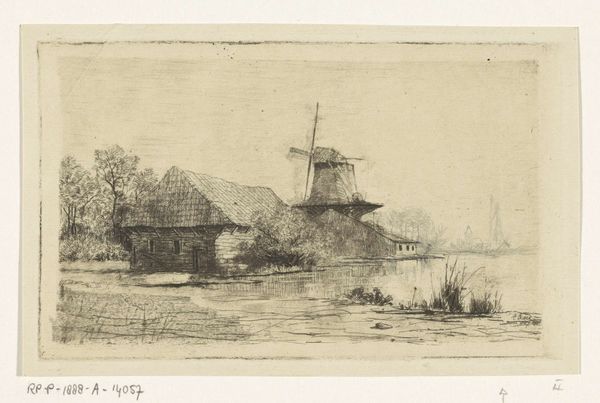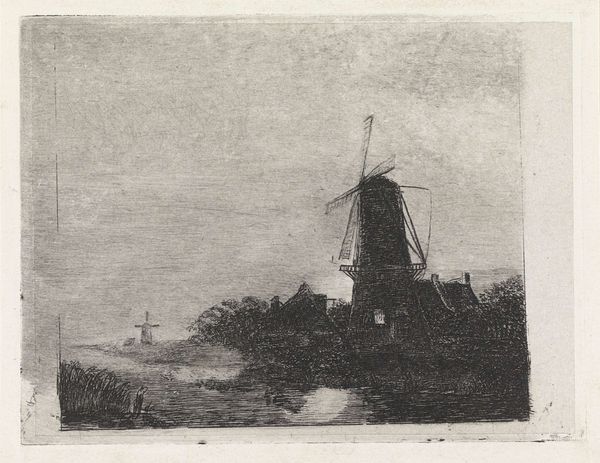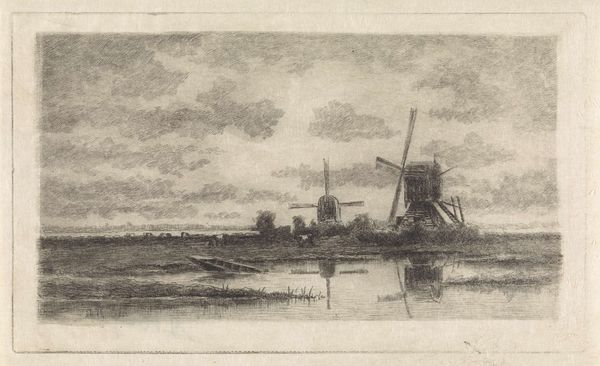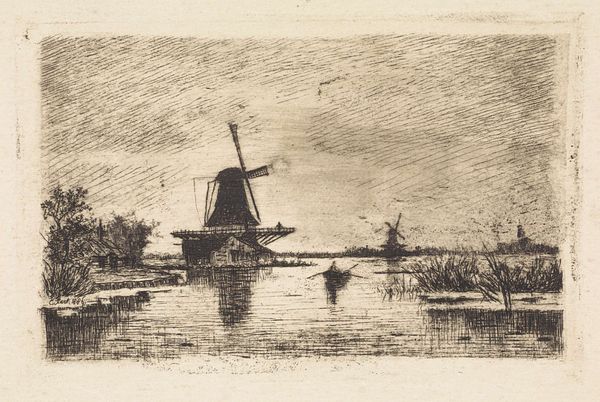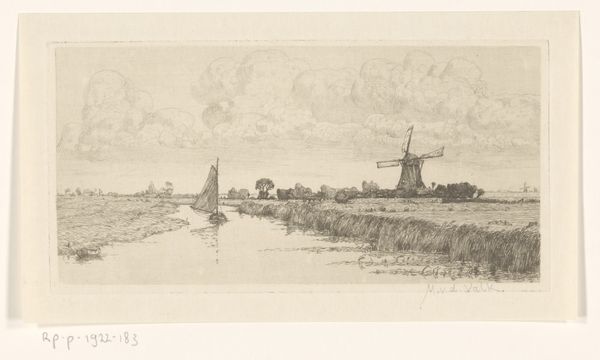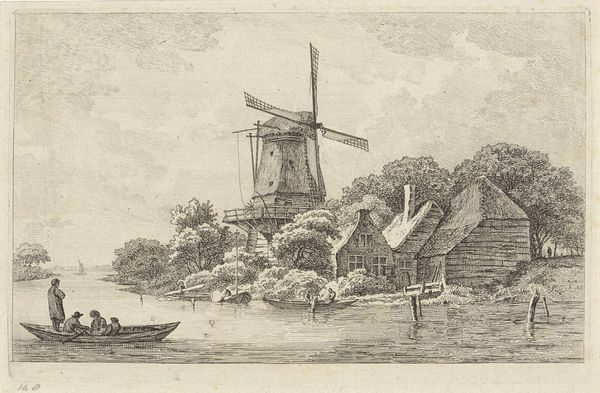
#
pencil drawn
#
photo of handprinted image
#
amateur sketch
#
light pencil work
#
thin stroke sketch
#
pencil sketch
#
light coloured
#
incomplete sketchy
#
river
#
pen-ink sketch
#
pencil work
Dimensions: height 99 mm, width 168 mm
Copyright: Rijks Museum: Open Domain
Curator: Here we have Willem Roelofs' "Riviergezicht met visser", or "River View with a Fisherman," made sometime between 1832 and 1893. It's currently housed right here at the Rijksmuseum. Editor: Immediately, I notice the quiet melancholy of it, the almost monochrome palette. It feels incredibly serene but also hints at something lost or fading. Curator: It's an intriguing work when you consider the labor involved. Notice the delicate, almost fragile pencil lines that compose the scene. This wasn't a quick sketch; Roelofs meticulously built up the image, one thin stroke at a time. There's a real dedication to craft here. Editor: Yes, and seeing that figure toiling away in the boat—alone on that river, framed against the backdrop of the Dutch landscape, immediately brings issues of class and labor to the surface. We're talking about the lives of ordinary people represented in a very understated way. The river, as both a source of livelihood and a potential site of exploitation. Curator: Precisely. And that windmill in the background is significant. Windmills represent not just progress and industry, but a harnessing of natural power that has material consequences for people. They reflect the constant negotiation between man and nature. Editor: And thinking of Roelofs, placing himself within that historical narrative is critical, particularly as industrialization shifts across the Dutch countryside and the Netherlands as a whole. It provokes crucial conversations regarding gender and the development of landscape art through new representational methodologies. Curator: Absolutely. The subtleties in mark-making, like those light pencil marks, really underscore the economic processes embedded into material choices of artmaking at the time, wouldn't you agree? It encourages us to reflect upon labor exploitation throughout art history by means of material. Editor: The "amateur sketch" aesthetic itself may point to Roelofs aligning himself with specific artistic and political circles. As a statement on authenticity and tradition. Curator: That said, the materiality gives so much dimension—there’s that "photo of a hand-printed image" element too. And that sense of light even with just pencil on paper speaks volumes about his process. Editor: Thinking through an activist lens certainly illuminates the picture through critical consciousness—connecting us to the work as both a social product as well as a material item. Curator: So true—and these lenses really enrich our comprehension of it. It shows how intertwined craft, labor, and even the most seemingly innocuous sketch really is!
Comments
No comments
Be the first to comment and join the conversation on the ultimate creative platform.

